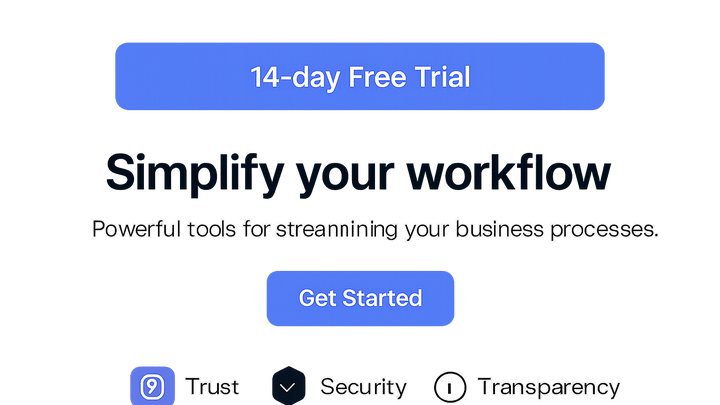Published on 2025-06-29T20:14:27Z
What is Trial Length Disclosure? Why Transparency in Trial Periods Matters
Trial Length Disclosure is the practice of transparently communicating the duration of a free or paid trial period across a website or marketing materials. It sets clear expectations for users, reducing uncertainty and friction during sign-up and post-sign-up phases. From a Conversion Rate Optimization (CRO) standpoint, clearly stated trial periods can increase trust and drive higher conversion rates. In User Experience (UX), it minimizes confusion, lowers abandonment rates, and enhances overall satisfaction. SEO benefits arise when descriptive trial information is indexable, improving search relevance for trial-related queries. Tools like Prevue.me can audit and optimize trial length disclosures by analyzing placement, wording, and accessibility compliance to maximize lead generation.
Trial length disclosure
Clearly stating a product's trial period duration to set expectations, build trust, and improve CRO, UX, and SEO.
Why Trial Length Disclosure Matters
Trial length disclosure is essential for setting clear user expectations and establishing trust. By communicating the exact duration of free or paid trials upfront, businesses reduce decision friction and improve conversion rates. In UX, transparent trial terms minimize confusion, lower abandonment, and increase satisfaction. From an SEO perspective, indexable trial information can enhance search visibility for trial-related queries. Tools like prevue.me can provide actionable critiques on placement, wording, and accessibility to optimize these disclosures.
-
Building trust
Clear trial durations signal honesty and transparency, reducing skepticism and encouraging sign-ups.
-
Reducing cognitive load
Providing straightforward trial length information upfront lowers decision-making effort and prevents user frustration.
-
Seo visibility
Descriptive trial details that are part of the page content can be indexed by search engines, improving relevance for trial-related searches.
Best Practices for Trial Length Disclosure
Implementing trial length disclosures effectively requires attention to copy, design, and accessibility. Follow these best practices to maximize clarity and impact:
-
Prominent placement
Position trial duration above the fold or next to key CTAs to ensure users see it immediately.
- Hero section:
Include the trial period in the main headline or subheadline for instant visibility.
- Cta buttons:
Incorporate duration into button text, e.g., ‘Start 14-Day Free Trial’, to reinforce expectations.
- Hero section:
-
Clear wording
Use concise, unambiguous language and avoid fine print. Emphasize ‘free’, ‘days’, and any renewal conditions.
-
Accessible design
Ensure text meets color contrast standards and is readable by screen readers to maintain compliance and inclusivity.
-
Consistent messaging
Maintain the same trial duration language across all touchpoints, including emails, banners, and onboarding flows.
Common Pitfalls to Avoid
Even well-intentioned disclosures can backfire if not implemented properly. Watch out for these frequent mistakes:
-
Buried information
Hiding trial duration in footers or lengthy terms and conditions erodes trust and increases drop-offs.
-
Overpromising
Advertising generous trial periods without clear renewal notices can lead to customer dissatisfaction and legal issues.
-
Vague terminology
Using vague terms like ‘trial’ or ‘demo’ without specifying length confuses users and hurts conversion.
Examples and SaaS Use Cases
Review how leading SaaS platforms handle trial length disclosure to inform your own strategy.
-
Prevue.me
prevue.me prominently displays ‘14-Day Free Trial’ in its header and includes a tooltip with renewal details next to the CTA, supporting clear expectations and boosting conversions.
-
Slack
Slack highlights ‘Get started for free’ on its homepage and specifies ‘Up to 90 days free for Education’ for targeted segments, setting clear expectations for that audience.
-
Poor example crm
A hypothetical CRM that only states ‘Try it now’ without any trial duration sees higher abandonment during signup due to uncertainty.
